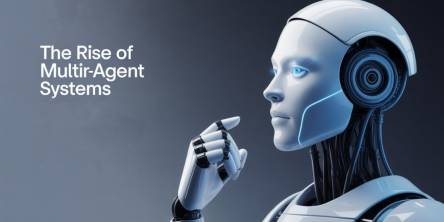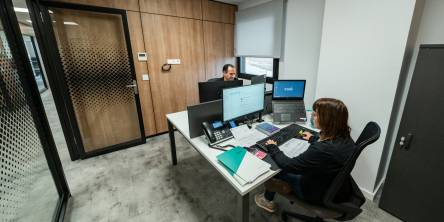Why Software Testing Strategy Must Transform in 2021?

The intricacy of software programs has increased significantly as a result of a rise in the number of delivery connections, launched, functions, features, networks, and embedding technologies available to developers. Businesses now, more than anything, have their work cut outside for them: they must create high-quality apps while also expediting their time to market. The software testing approach must be transformed to keep up with new advancements such as DevOps and Agile, which have results that are centered on Continuous Integration and Delivery. This has enhanced more crucial for firms to endure aggressively and meet consumer predications.
In this article, we'll explore the reasons why the company's software testing approach must be revised in 2021.
1. The expanding reach of the Internet of Things: You must have noticed a rise in the level of automation in consumer durables such as televisions, air conditioners, geysers, and so on. For instance, the brightness of your television set's display may be adjusted depending on the amount of led lamp present. In addition, if the temperature of the water exceeds a certain level, the geyser will shut off automatically. The existence of enterprise devices in these gadgets has made it feasible to enjoy these kinds of experiences.
As a result, only if the quality of such electronic hardware is maintained at an exceptionally high level, the operation of these devices will be significantly impaired. So the software testing approach should not only test the application(s) separately, and therefore should test the application(s) as if it were a component of the device. Considering how quickly the Internet of Things is spreading across the world, software application screening must be thorough to ensure that every feature and API is meeting its intended goals. It recommends that a software testing method be used to verify the program's accessibility, interoperability, scalability, dependability, safety, efficiency, and data quality, among other characteristics.
2. The introduction of artificial intelligence and machine learning technology: The year 2021 will witness the expansion of AI and machine learning technology into additional areas. Furthermore, artificial intelligence (AI) would be used in software application testing to address the problems of increasing complexity, repetitive activities, and shortening the time to market, among other things. These will vastly improve the skills of human testers while freeing them from boring, monotonous, or mission-critical jobs, which they will be able to devote their time to. In turn, this will lead to resource optimization and the achievement of tight turnaround requirements.
3. Big data testing: A large number of software programs, each with a diverse set of APIs, produce a massive quantity of data. For example, the software is used to purchase airline or railroad tickets, among other things. In this case, a large amount of data must be verified using criteria such as direct relation tests. In addition to the program, the data should be checked for correctness, completeness, security, coherence, authenticity, and relevance, among other characteristics.
4. Shift from conventional performance testing to performance engineering: Because the quality of software programs is defined by the number of digital touchpoints and APIs that they have, conventional performance testing must be replaced with end up making. This means that performance measures such as load, test, spike, scalability, endurance, and volume will no longer be used in the software testing methodology to determine how well a piece of software performs.
A performance engineering approach would involve investigating how different components of a system work together to provide high-quality results seamlessly. The components would cover the full gamut of business and software issues, including privacy, scalability, effectiveness, hardware, operations, return on investment, and customer satisfaction, among others.
5. The shift from quality assurance to quality engineering: The old quality assurance approach no longer works in the new world order. As Agile and DevOps became an illegitimate industry standard, the emphasis is shifting to ensuring seamless integration and testing across the software development lifecycle (SDLC) and beyond.
Quality engineering must be engaged to foolproof a system against intrinsic faults across the whole researchers and research operations, which must be accomplished via the use of test automation.
6. Challenges of test automation: As software rate increases, and in response to expectations such as providing quicker testing cycles, detecting bugs early, and guaranteeing a higher classification accuracy, test automation is becoming more popular. This allows the team to concentrate on activities such as the preparation of automated software testing cases, the simulation of variables, and the analysis of test results. Considering that testing will be performed for both functional and non-functional elements, automation testing is the most appropriate method.
7. Application security: Even though virtual reality makes our everyday activities more comfortable, quick, speedy, and malfunction, the threat of a security breach looms big in the background. As security keeps on filling in significance as an issue for analyzers and engineers in 2021 and for years to come, the DevOps testing system ought to incorporate security as a feature of the DevOps way to deal with testing.
Conclusion
For companies to provide bug-free apps while also ensuring greater test coverage and a quicker time to market, software testing has been a need. Businesses will use new testing methods to remain ahead of the competitors and provide a positive consumer experience in 2021.
Similar Articles
Not long ago, the idea of multiple AI agents working together, each with a specific role, collaborating to solve problems, felt like science fiction.
In today’s data-driven world, choosing the right business intelligence (BI) platform can make or break your organization's analytics success.
We all know that companies today are no longer limited to a single physical location. Work processes are also no longer strictly isolated.
It is neither secret nor news that the mind-boggling pace of digital transformation around us has totally altered consumer expectations.
In the world of finance, speed and accuracy are everything. Decisions made a day late can cost millions, and delayed visibility into financial performance can leave even the best organizations blind to risks.
Discover the best tools to enhance employee recognition, boost morale, and create a more motivated, engaged workplace culture.
At first glance, off-the-shelf software appears to be a dream come true. They are quick to set up, cheaper upfront, and marketed as “universal.”
A modern business must continually adapt. This bit everyone seems to know.
The modern healthcare industry is undergoing a significant transformation. The models of healthcare that we are used to thus far are now making way for a more data driven approach









